Toad Features
Toads have toxic skin. Glands in the skin produce the poison to deter predators. The paratoid behind the toad's head is especially toxic. The toxins of cane toads can kill a dog.
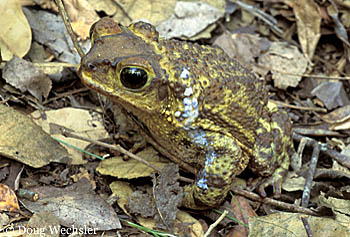
Toxins secreted from the paratoid gland of a Common Cuban Toad
Toads call by forcing air from their lungs through their larynx. As it passes through the larynx the air vibrates the vocal chords creating the sound which is transmitted by the inflated vocal sac.
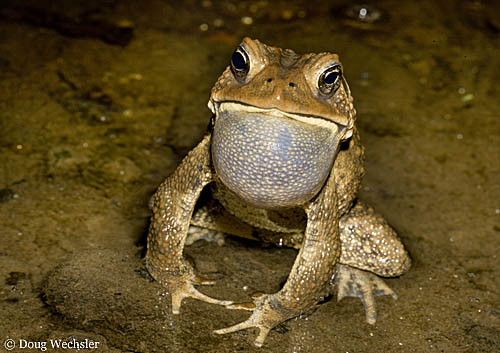
Male American Toad with calling with inflated vocal sac.
When the males reach water, and the air temperature is warm enough, they begin to call. Their song is a long trill lasting from 6 to 30 seconds. Only the males sing.

A male American Toad calls.
Females are drawn to the choruses of the males. As soon as a female arrives at the pond or creek, males will try to grab her. Males have horny tubercles on their first and second fingers to get a tight hold on the female. This mating grasp is called amplexus. The pair will stay in amplexus until they mate or another male separates them. Males are smaller than females and are always the ones on top.
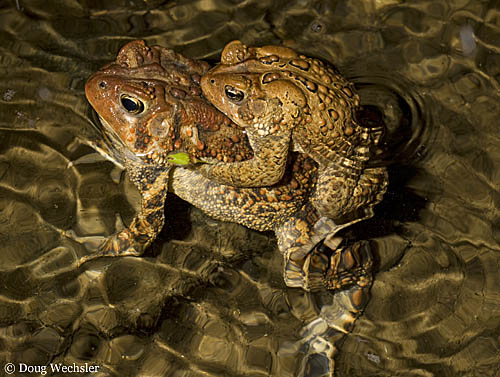
American Toads in amplexus
Sometimes more than one male will grab onto the female and a small toad ball will form. This can be dangerous for the female. Occasionally a female drowns because she cannot get to the surface to breath.
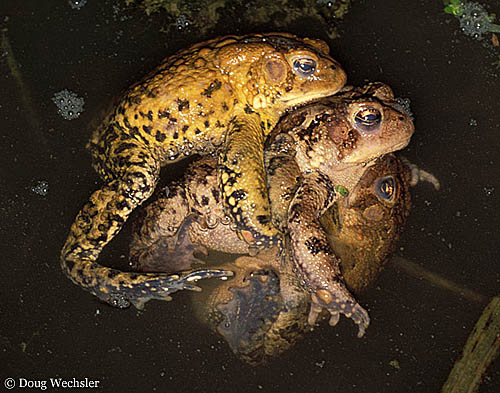
Two males holding on to female in the middle
Mating takes place within a few hours of the female's arrival. The female lays two long strands of eggs which come out side by side. As the eggs emerge, the male releases sperm into the water to fertilize them.

Female releases two strands of eggs while smaller male fertilizes
The eggs are blackish on top and white below. The long curly strands anchor the eggs to rocks and sticks under water to keep them from washing away.
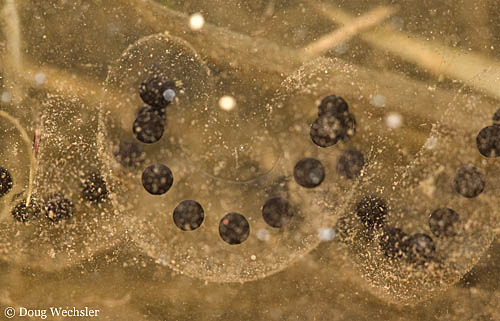
American Toad eggs
Depending on the water temperature, eggs hatch in three days to two weeks and tiny black tadpoles emerge. Eggs hatch faster in warmer water.
add photo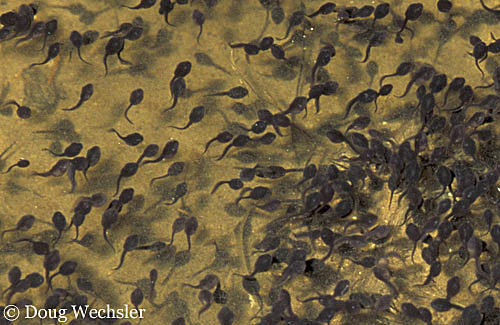
Toad tadpoles
The tadpoles grow for several weeks. In less than two months they metamorphose into toadlets. These tiny toads are less than half an inch long. In a good year, thousands can cover the ground on the side of a pond.

Newly metamorphosed toadlet on penny
Within days, the toadlets travel away from the wetlands into the woods and gardens where they will spend most of their lives.

Woodland habitat of American Toad
The little toads grow rapidly and will be ready to breed in two or three years.

American Toad adult from the Adirondacks
-->


